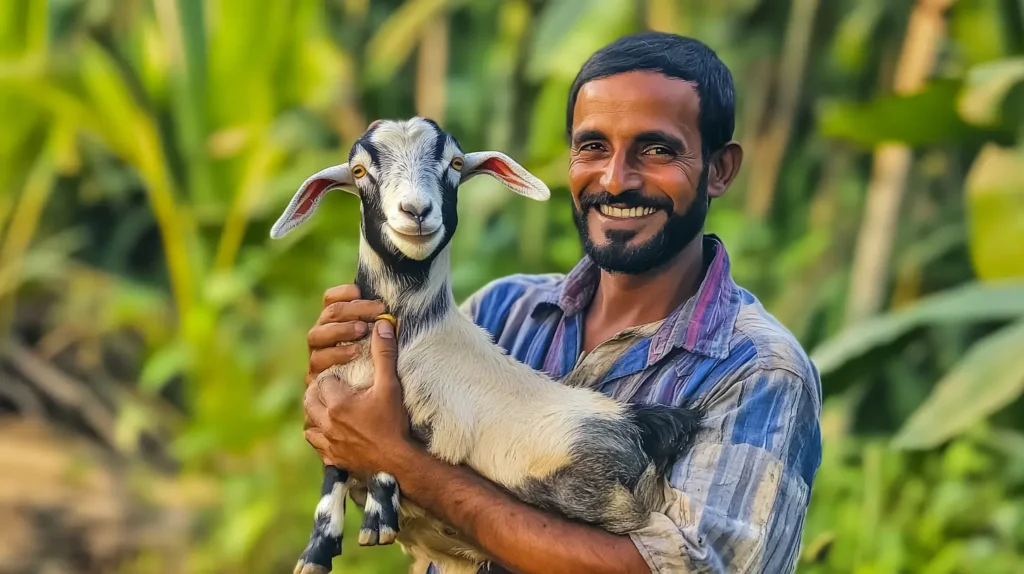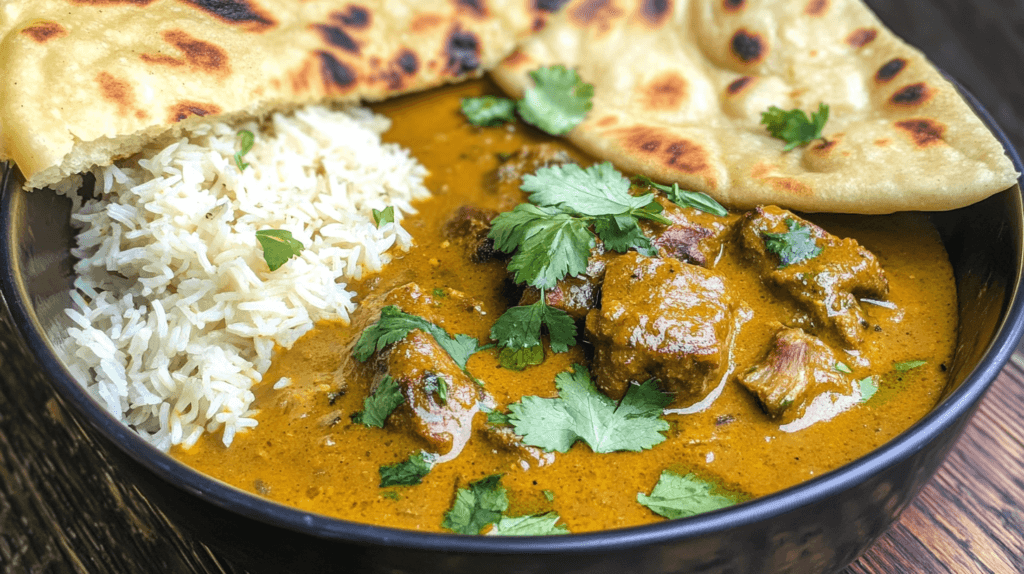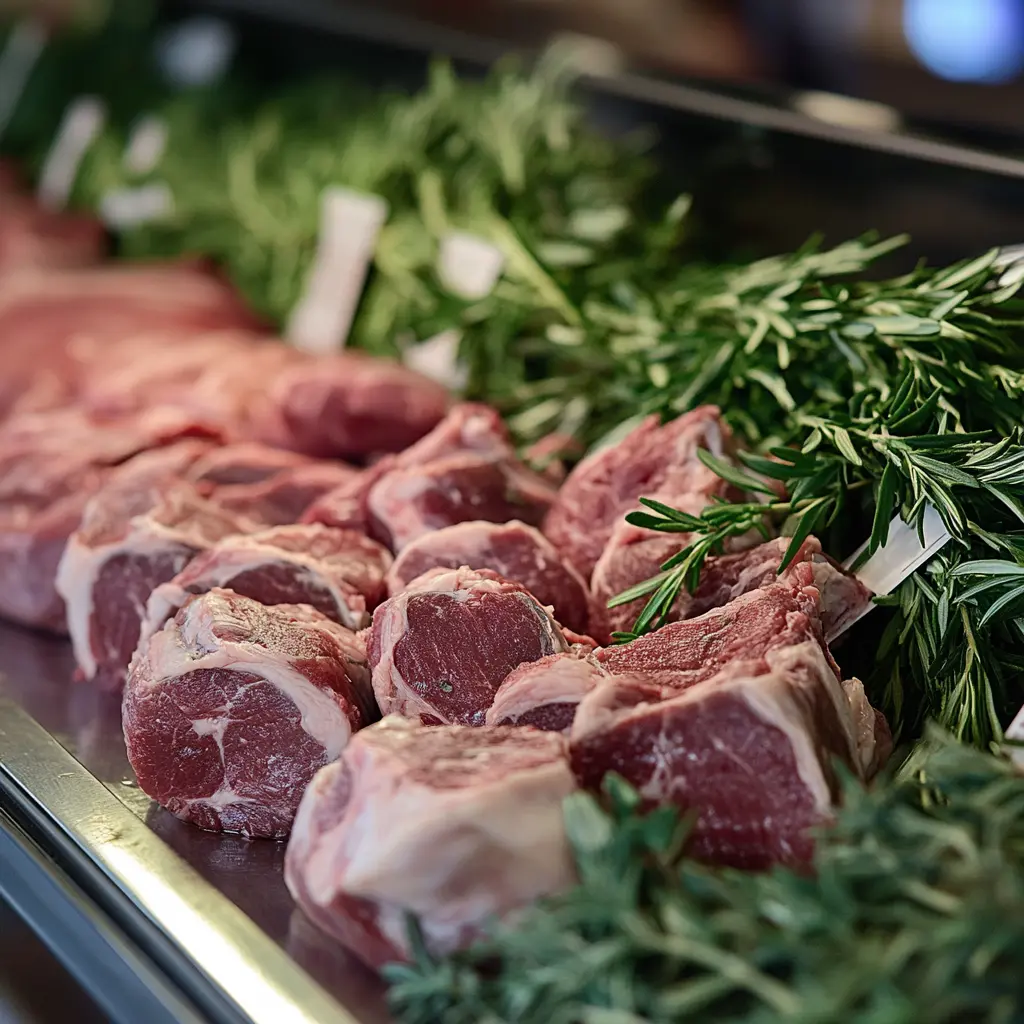Why Is Goat Meat Not Sold in Stores?
Goat meat is a nutritional powerhouse consumed widely across the globe. Yet, when you visit your local grocery store, it’s curiously absent from the shelves. Why is this delicious and healthy meat so elusive in mainstream retail? In this article, we’ll uncover the reasons, diving into supply chain challenges, cultural preferences, and retail hurdles while exploring its potential to become a household favorite. Whether you’re curious about its benefits or the market dynamics at play, this guide will serve as your go-to resource.
Introduction to Goat Meat and Its Market Presence
An Overview of Goat Meat Consumption Globally
Goat meat, also known as chevon or cabrito, is a staple in many parts of the world, especially in Asia, Africa, and the Middle East. With nearly 70% of the global population consuming it, this protein source is not as niche as it might seem in Western countries. Unlike beef or chicken, which dominate the American palate, goat meat enjoys a reputation as a delicacy in regions where culinary traditions value its robust flavor and adaptability.
The Significance of Goat Meat in Various Cultures
In places like India, the Caribbean, and parts of Africa, goat meat isn’t just a dietary staple—it’s deeply woven into cultural traditions. From festive dishes like curry goat in Jamaica to slow-cooked stews in Ethiopia, goat meat holds both spiritual and celebratory significance. Despite its cultural prominence, it has struggled to break into the Western mainstream.
Current Trends in the Goat Meat Industry
Interestingly, the demand for goat meat is gradually increasing in countries like the United States, driven by growing immigrant communities and a rising interest in diverse cuisines. Yet, the industry remains fragmented, with smaller farms dominating production. This decentralized system makes it harder to scale up and cater to large retail chains, keeping goat meat primarily available in specialty stores or farmers’ markets.
Why is goat meat not sold in stores? The answer begins with understanding its global role and evolving market dynamics. But there’s more to uncover as we delve into the logistical and economic challenges it faces.
Supply Chain Challenges

Limited Industrial Farming for Goats
Unlike chickens and cows, goats are not typically raised on large, industrial farms. Instead, most goat farming happens on smaller, family-run operations. This structure leads to limited scalability and inconsistent supply. Without mass production, it’s hard for goat meat to meet the demands of mainstream grocery stores. This lack of industrialization directly impacts why goat meat is not sold in stores on a larger scale.
High Production Costs Compared to Other Meats
Goats are surprisingly picky eaters and require specific care, which makes farming them more expensive compared to raising other livestock. Additionally, their lower yield (less meat per animal) adds to the overall cost. Retailers often prioritize cost-effective products, and goat meat’s higher price point can discourage grocers from stocking it.
Issues with Slaughtering and Processing Infrastructure
Another significant hurdle lies in the slaughtering and processing stages. Many facilities are designed for cows, pigs, and chickens, but not for goats. The limited availability of goat-specific processing centers further increases costs and logistical challenges, pushing goat meat into niche markets rather than mainstream grocery aisles.
Why is goat meat not sold in stores? The fragmented supply chain, paired with high production and processing costs, creates a perfect storm that limits its widespread availability.
Consumer Demand and Preferences
Cultural and Regional Preferences for Goat Meat
Goat meat has a devoted following in regions where it holds cultural importance, like the Middle East, India, and Africa. However, in the U.S. and other Western nations, the preference leans heavily toward chicken, pork, and beef. This difference in culinary habits explains why goat meat often remains absent from standard grocery stores. While immigrant communities create some demand, it isn’t enough to drive widespread retail availability.
Perception of Goat Meat as Exotic
Many consumers in Western markets view goat meat as exotic or unfamiliar. This perception can make them hesitant to try it, especially when more familiar options like beef and chicken dominate menus and marketing campaigns. Without strong demand, retailers are less inclined to stock goat meat in their stores.
Competition from More Popular Meats
The dominance of chicken and beef further diminishes the appeal of goat meat. Both are more affordable and have widespread culinary applications. Goat meat, while nutritious and flavorful, has struggled to compete due to its higher price point and the need for specific cooking methods.
For a deeper dive into goat meat’s culinary uses, check out this guide on what goat meat tastes like.
Retail Challenges for Goat Meat
Shorter Shelf Life and Storage Issues
Goat meat has a naturally shorter shelf life than beef or pork, primarily due to its lower fat content and specific storage requirements. Without proper handling, it can spoil quickly, making it less practical for grocery chains that rely on longer-lasting products. This logistical hurdle further explains why goat meat is not sold in stores as widely as other meats.
Inconsistent Supply for Retail Chains
Large grocery chains require consistent and high-volume supplies to meet customer demand. However, goat meat production often comes from smaller farms, leading to an inconsistent supply. Retailers are less inclined to stock a product that may not always be available, especially when it occupies valuable shelf space.
The Role of Specialty Stores Versus Mainstream Grocers
While mainstream stores shy away from goat meat due to its challenges, specialty grocers and ethnic markets have embraced it. These stores cater to communities with cultural ties to goat meat, offering it fresh or frozen. For mainstream adoption, significant shifts in both production and consumer demand would be necessary.
If you’re curious about ways to incorporate goat meat into your meals, explore easy goat meat recipes for inspiration.
Environmental and Ethical Considerations
Sustainability of Goat Farming
Compared to cattle, goats are more environmentally friendly. They require less land and water, and they can thrive in arid regions unsuitable for other livestock. Despite these advantages, the fragmented nature of goat farming makes scaling up for mass retail challenging. Encouraging sustainable practices could help change why goat meat is not sold in stores on a broader scale.
Ethical Considerations in Livestock Farming
Goats are often raised in humane, free-range environments, particularly on smaller farms. This aligns with growing consumer demand for ethically sourced meat. Promoting these values could help goat meat gain traction among conscious shoppers seeking alternatives to factory-farmed products.
Potential Benefits of Increased Goat Meat Production
Expanding goat meat production could offer multiple benefits, from supporting small farmers to reducing the environmental impact of meat consumption. With increased awareness and infrastructure improvements, goat meat has the potential to become a sustainable and ethical choice for many.
For more insights into sustainable and ethical food choices, check out other articles on sustainable meats.
The Nutritional and Culinary Appeal of Goat Meat
Nutritional Benefits Compared to Other Meats
Goat meat stands out as one of the healthiest red meat options. It is low in fat, high in protein, and rich in essential nutrients like iron, zinc, and vitamin B12. Compared to beef or pork, goat meat has fewer calories and less saturated fat, making it a smart choice for health-conscious consumers. Despite these benefits, why is goat meat not sold in stores as widely as other meats? The answer lies in limited awareness about its nutritional profile among Western consumers.
Culinary Versatility and Traditional Dishes
From hearty stews to flavorful curries, goat meat is incredibly versatile. It absorbs spices beautifully, making it a favorite in cuisines worldwide, such as Indian mutton biryani or Jamaican curry goat. However, some may find its preparation intimidating due to unfamiliarity with the cooking methods. Educating consumers on how to prepare goat meat could help increase its appeal in Western markets.

Promoting Goat Meat in New Markets
To increase demand, producers and marketers need to highlight goat meat’s unique qualities and versatility. Offering pre-marinated cuts or ready-to-cook meals could make it more accessible for busy households. Additionally, featuring it on restaurant menus could introduce goat meat to a broader audience and pave the way for its acceptance in grocery stores.
If you’re curious about what goat meat tastes like and how to cook it, check out this guide.
Frequently Asked Questions (FAQs)
Why is goat meat less popular than beef or chicken?
Goat meat is less popular in Western markets because of cultural preferences, unfamiliarity with its flavor, and higher costs compared to other meats. Many consumers view it as exotic and are hesitant to try something new.
Can goat meat be found in specialty stores?
Yes, goat meat is often available in specialty or ethnic markets. These stores cater to communities that regularly consume goat meat and stock fresh or frozen options.
What are the health benefits of goat meat?
Goat meat is lean, high in protein, and packed with nutrients like iron and vitamin B12. Its low fat and calorie content make it a healthier alternative to other red meats.
Is goat farming sustainable for the environment?
Absolutely! Goats require less land and water compared to cows and can thrive in diverse environments. Their smaller ecological footprint makes them a sustainable livestock option.
By addressing these questions and raising awareness, we can better understand why goat meat is not sold in stores and explore ways to bring this underrated meat to a wider audience.
The Future of Goat Meat in Retail Markets (350 Words)
Opportunities for Growth in Retail
As demand for sustainable and ethically sourced food grows, goat meat could become a viable choice for conscious consumers. The rise of farm-to-table dining and niche markets provides a platform to showcase its benefits. Targeting specialty retailers, health-focused grocers, and online food platforms could bridge the gap between producers and potential buyers. Addressing why goat meat is not sold in stores at scale requires adapting to these changing consumer trends.
Overcoming Consumer Hesitation
One of the biggest hurdles is the unfamiliarity many Western consumers have with goat meat. Initiatives such as public tastings, cooking demonstrations, and chef endorsements can help overcome misconceptions. Retailers might also experiment with smaller, ready-to-cook portions to attract first-time buyers.
Collaboration Across the Supply Chain
For goat meat to gain a foothold in mainstream retail, producers, processors, and retailers need to collaborate. Investing in specialized processing infrastructure and forming cooperatives among small farmers could stabilize the supply chain, ensuring consistent availability and competitive pricing.
Conclusion and Call to Action
Summarizing the Challenges
Despite its global popularity and nutritional advantages, goat meat remains absent from many mainstream grocery stores due to cultural preferences, supply chain limitations, and consumer perceptions. Addressing why goat meat is not sold in stores involves tackling these barriers head-on through education, awareness, and infrastructure improvements.
The Potential for Change
Goat meat is more than just an exotic delicacy—it’s a sustainable and healthy protein source with untapped potential in Western markets. By promoting its benefits and making it accessible, the industry can pave the way for goat meat to become a regular feature in grocery stores.
Call to Action
Are you curious to try goat meat or learn more about its preparation? Visit your local ethnic market or explore recipes like this goat meat guide. Share your experiences and spread the word about this underrated protein. Together, we can bring goat meat to a wider audience and celebrate its rich culinary and cultural heritage.

